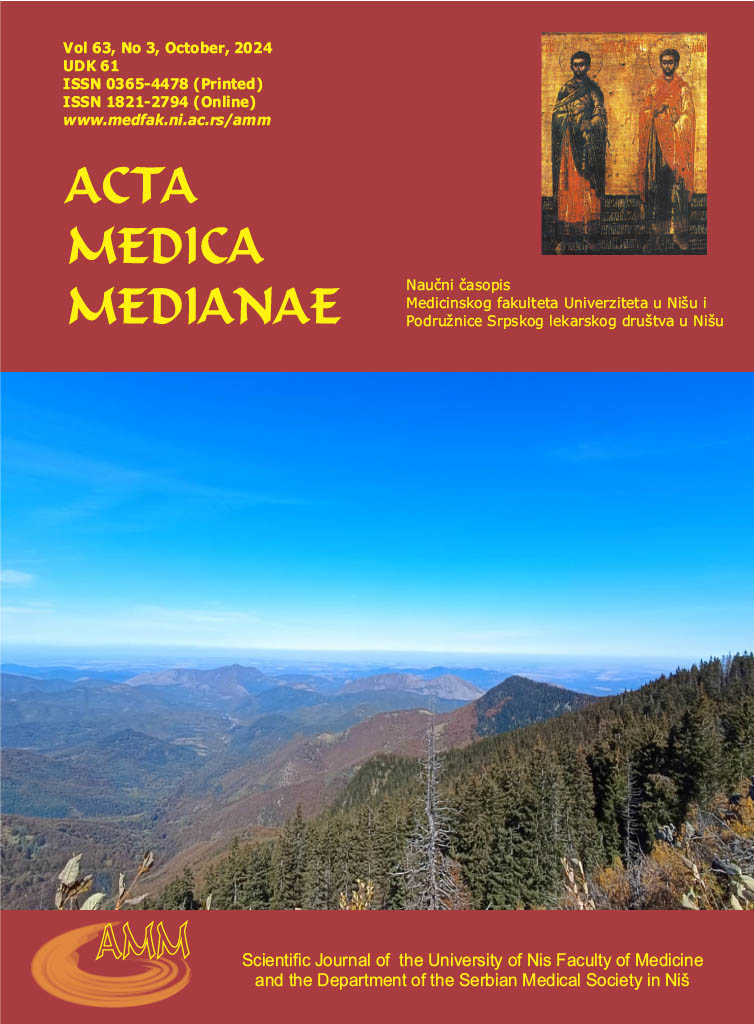PARANEOPLASTIC NEUROLOGICAL SYNDROME IN A PATIENT WITH HODGKIN LYMPHOMA
Abstract
Cancer patients can develop paraneoplastic neuropathy, which cannot be explained by tumors, metastases, infections, or side effects of cancer treatment. We present a case of a 38-year-old patient of male gender with weight loss, night sweats, and weakness. He exhibited sensory loss, paresthesias, and allodynia in both lower extremities. White blood cells were 20 x 109/L, and C-reactive protein was 40 mg/L. Viral markers indicated no signs of an active infection. Ultrasonography showed several peripheral lymph nodes with reduced echogenicity. Lung computed tomography detected aggregated lymph nodes in jugular regions and mediastinum. The physical examination revealed swollen lymph nodes in the right supraclavicular region. Brain and spinal magnetic resonance were normal. Cerebrospinal fluid cytology ruled out infectious and malignant involvement. Nerve conduction studies revealed decreased amplitude in the lower extremities, with the inability to elicit sensory and motor responses. Nerve conduction studies revealed decreased amplitude in the lower extremities, with the inability to elicit sensory and motor responses and diminished F response. The patient had symmetrical, ascending neuropathy with absent deep tendon reflexes, indicating sensory-motor polyneuropathy. The biopsy of the lymph node confirmed mixed cellularity Hodgkin lymphoma. The patient started on a chemotherapy regimen including doxorubicin, bleomycin, vinblastine, and dacarbazine. Intravenous immunoglobulins were administered. Partial improvement was noted, with prolonged physical therapy. When neurological symptoms are associated with a tumor or positive onconeural antibodies, paraneoplastic neuropathy can be diagnosed. Timely recognition is crucial since any delay in treatment can be detrimental.
References
Al IO, Koç B, Bayram C, Paslı EU, Yıldız EP, Ayçiçek A, et al. Variant Guillain-Barré syndrome in a patient with Hodgkin lymphoma: AMSAN. Turk Pediatri Ars 2018;53(4):263–6.[CrossRef][PubMed]
Antoine JC, Camdessanché JP. Paraneoplastic neuropathies. Curr Opin Neurol 2017;30(5):513–20. [CrossRef][PubMed]
Flanagan EP, Sandroni P, Pittock SJ, Inwards DJ, Jones LK. Paraneoplastic lower motor neuronopathy associated with Hodgkin lymphoma. Muscle Nerve 2012;46(5):823–7.[CrossRef][PubMed]
Graus F, Ariño H, Dalmau J. Paraneoplastic neurological syndromes in Hodgkin and non-Hodgkin lymphomas. Blood 2014;123(21):3230–8. [CrossRef][PubMed]
Graus F, Dalmau J. Paraneoplastic neuropathies. Curr Opin Neurol 2013;26(5):489–95.[CrossRef][PubMed]
Graus F, Vogrig A, Muñiz-Castrillo S, Antoine JCG, Desestret V, Dubey D, et al. Updated Diagnostic Criteria for Paraneoplastic Neurologic Syndromes. Neurol Neuroimmunol Neuroinflamm 2021;8(4):e1014. [CrossRef][PubMed]
Mauermann ML. Neurologic Complications of Lymphoma, Leukemia, and Paraproteinemias. Continuum (Minneap Minn) 2017;23(3, Neurology of Systemic Disease):669–90. [CrossRef][PubMed]
Muppidi S, Vernino S. Paraneoplastic neuropathies. Continuum (Minneap Minn) 2014;20(5, Peripheral Nervous System Disorders):1359–72.[CrossRef][PubMed]
Verschueren A. Motor neuropathies and lower motor neuron syndromes. Rev Neurol (Paris) 2017;173(5):320–5. [CrossRef][PubMed]
Zoccarato M, Grisold W, Grisold A, Poretto V, Boso F, Giometto B. Paraneoplastic Neuropathies: What’s New Since the 2004 Recommended Diagnostic Criteria. Frontiers in Neurology 2021;12:706169. [CrossRef][PubMed]

